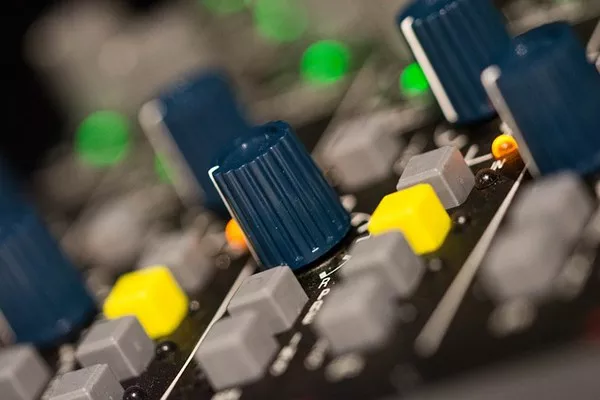High-Performance Liquid Chromatography (HPLC) is a widely used analytical technique in various industries, including pharmaceuticals, biotechnology, food and beverages, environmental analysis, and more. HPLC enables the separation, identification, and quantification of complex mixtures with high sensitivity and precision. To achieve optimal results, a fundamental understanding of the HPLC instrumentation is crucial. This article aims to delve into the key components and principles of HPLC instrumentation, shedding light on its operational mechanisms.
The Core Components of HPLC Instrumentation
1. Pump System:
The pump system is the heart of an HPLC instrument, responsible for delivering the mobile phase to the column at a constant flow rate. The pump maintains the pressure required for efficient separation and is available in various types, including reciprocating piston, syringe, and high-pressure dual-piston pumps. Precision and stability of the flow rate are essential for accurate and reproducible results.
2. Sample Injector:
The sample injector introduces the sample into the mobile phase stream, which then enters the column for separation. Common types of injectors include manual, automated, and autosamplers. An autosampler enhances efficiency by allowing multiple sample injections automatically, enabling unattended operation, and improving sample throughput.
3. Column:
The HPLC column is the stationary phase where the separation of analytes takes place. It consists of a packed bed of fine particles held within a stainless-steel tube. The choice of column type (reverse phase, normal phase, ion-exchange, etc.) depends on the analytes’ nature and the separation requirements. Columns come in various dimensions, and selecting the appropriate one is essential for achieving optimal resolution.
4. Detector:
The detector is a crucial component of HPLC instrumentation responsible for monitoring the separated analytes. It converts the analyte concentration into an electrical signal, which can be displayed and recorded. Common detectors include UV-Vis, fluorescence, refractive index, and mass spectrometry detectors. Selecting the right detector depends on the analyte’s properties and detection sensitivity required.
Data Acquisition System:
The data acquisition system is responsible for collecting and processing the signals obtained from the detector. It facilitates peak integration, data display, and storage. Modern HPLC instruments are equipped with advanced data acquisition software, allowing for more accurate and efficient data analysis.
Mobile Phase Solvent Reservoir:
HPLC requires a precise and constant supply of the mobile phase. The solvent reservoir holds the mobile phase, which is typically a mixture of solvents (e.g., water and organic solvent) in a predefined ratio. Proper handling and degassing of the solvent are crucial to avoid the introduction of air bubbles, which can interfere with the separation process.
Operating Principles of HPLC
HPLC operates based on the principles of liquid chromatography, where a mobile phase flows through the column carrying the sample analytes. The interaction between the analytes and the stationary phase within the column causes differential migration, leading to their separation. The most common mode of HPLC separation is reverse-phase chromatography, where the stationary phase is hydrophobic and the mobile phase is a polar organic solvent.
The process begins with the injection of the sample into the mobile phase stream via the injector. As the mobile phase flows through the column, the analytes in the sample interact with the stationary phase. Analytes with stronger affinity for the stationary phase elute later, while those with weaker interactions elute earlier, resulting in a separation of the mixture into individual components.
The detector, placed at the end of the column, continuously monitors the eluting analytes. As each component emerges from the column, it produces a characteristic signal that the detector measures and records. The data acquisition system processes the signals, generating chromatograms that represent the analyte concentrations over time.
Factors Affecting HPLC Performance
Several factors influence the performance of HPLC instrumentation and the quality of results obtained:
Column Efficiency: The efficiency of the column directly impacts the resolution of peaks and the ability to separate closely eluting compounds. Proper column choice, conditioning, and handling are essential to maintain high column efficiency.
Flow Rate and Pressure: The flow rate affects the separation time and the resolution of peaks. Maintaining a consistent and appropriate flow rate is crucial for reproducibility. Excessive pressure can damage the column or affect separation, while insufficient pressure can lead to incomplete elution.
Mobile Phase Composition: The composition of the mobile phase impacts the separation selectivity and peak shape. Accurate preparation and degassing of the mobile phase are essential to avoid the introduction of bubbles and achieve stable baselines.
Detector Sensitivity: Detector sensitivity determines the lowest concentration of analyte that can be detected and quantified accurately. Selecting an appropriate detector based on the analyte’s properties is vital for achieving reliable results.
Conclusion
HPLC is a powerful analytical technique, widely used for the separation, identification, and quantification of complex mixtures in various industries. Understanding the instrumentation and operating principles of HPLC is essential for obtaining reliable and reproducible results. By comprehending the core components, operating principles, and factors influencing HPLC performance, scientists and researchers can utilize this versatile technique effectively for a wide range of applications, further advancing analytical capabilities across industries.

